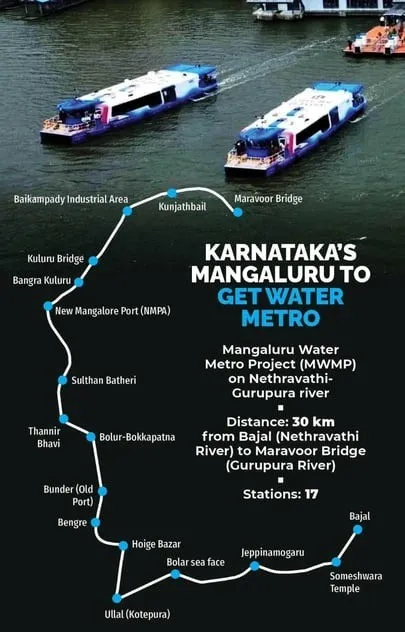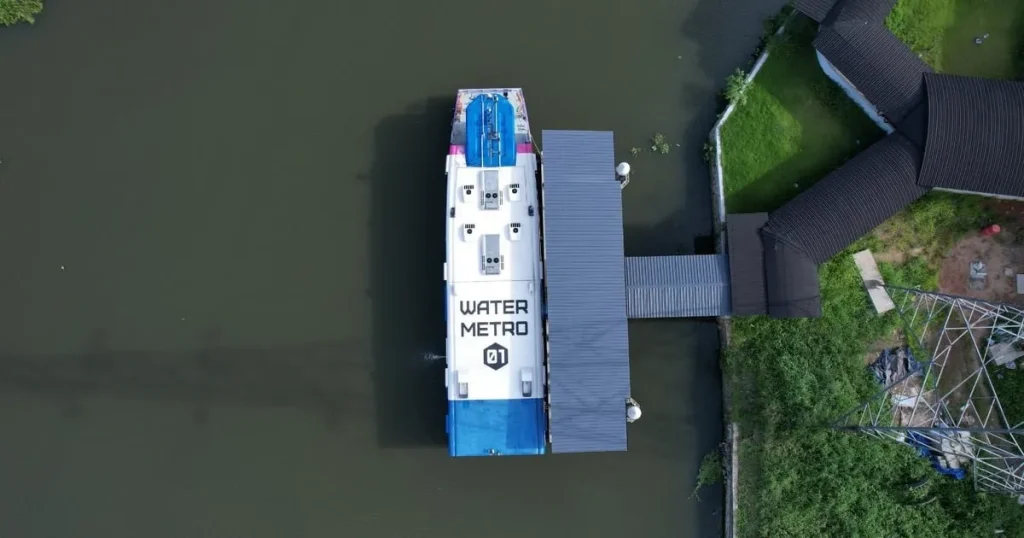
Karnataka’s coastal city, Mangaluru, is set to launch a Water Metro, inspired by Kerala’s Kochi model. The Karnataka Maritime Board (KMB) is preparing a detailed project report (DPR) for the Mangaluru Water Metro Project (MWMP), designed to connect isolated areas using an integrated water transport network. The project will utilise National Waterways along the Nethravathi and Gurupura rivers, spanning from Bajal to Maravoor.
Phased Implementation for Smooth Connectivity
The project will roll out in phases, with the initial section covering around 30 km along the Nethravathi-Gurupura River backwaters. This first phase will connect Bajal to Maravoor Bridge, incorporating 17 Metro stations.
According to a KMB official, “MWMP will become the second-largest water transport system after Kochi, aiming to improve connectivity, foster development, and enhance the quality of life.”
Eco-Friendly and Efficient Transit
The Water Metro aims to offer eco-friendly, economical transportation, featuring modern electric or diesel catamaran boats equipped with essential amenities for smooth operations. The proposal underscores environmental considerations and efficiency, with boats expected to support sustainable travel across Mangaluru’s waterways.
Budget Push for Mangaluru’s Water Metro
In the 2024-2025 budget, Karnataka Chief Minister Siddaramaiah confirmed plans to prepare a feasibility report for Water Metro services on the Nethravathi and Gurupura rivers.
Comprehensive Feasibility Study Underway
KMB has issued a tender for the DPR, which will outline infrastructure requirements, vessel configurations, traffic and environmental assessments, financial feasibility, and structural recommendations. The study will focus on station placement, demand, and connectivity while prioritising sustainability and efficient water taxi services.

Key aspects of the study include:
- Demand and Environmental Assessments: Traveller surveys and environmental evaluations will help determine service viability.
- Traffic and Route Optimization: Analysis of tidal changes, last-mile connections, and traffic routes will support strategic planning.
- Multimodal Connectivity: The study will explore integration with other transit modes, benefiting both passenger and cargo movements.
Long-Term Planning and Financial Viability
The study will cover a 25-year demand forecast, along with a detailed LiDAR survey and bathymetric studies for station placement. An environmental impact assessment within a 5-km buffer zone will examine air and water quality, and a financial analysis will outline costs, revenue, and socio-economic impacts.
The report is expected to recommend an SPV (Special Purpose Vehicle) for effective project implementation, enhancing its appeal to investors.
Learning from Kochi’s Success
India’s first Water Metro, the Kochi Water Metro, was inaugurated in April 2023 by Prime Minister Narendra Modi. With 78 boats, 38 terminals, and intermodal links across 76 km in Vembanad Lake, the Kochi Water Metro has set a benchmark. Its air-conditioned boats offer reliable, affordable transport, connecting suburbs with limited transit access. Inspired by this success, Mangaluru’s project seeks to create similar, integrated water-based connectivity.
